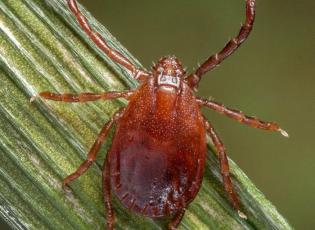Theileria orientalis Ikeda: An emerging risk in cattle
Theileria orientalis Ikeda is a tickborne infection, and when identified in United States herds has been associated with the Asian longhorned tick.
June 6, 2024

Rosslyn Biggs, DVM,OSU College of Veterinary Medicine, State Beef Cattle Extension Specialist
Cattle producers and veterinarians continue to fight anaplasmosis in herds across the United States. However, a new emerging infection may pose a similar if not greater threat. Theileria orientalis Ikeda is a tickborne infection, and when identified in United States herds has been associated with the Asian longhorned tick, Haemaphysalis longicornis, a relatively new tick species for the United States. T. orientalis Ikeda has caused major economic losses in Asia, New Zealand, and Australia primarily as a result of deaths or illness in beef and dairy cattle and other associated production losses. Fortunately, T. orientalis Ikeda poses no known human health risks. Neither the tick nor T. orientalis Ikeda has been identified in Oklahoma at this time.
As T. orientalis Ikeda invades the red and white blood cells of cattle, it creates clinical signs of disease like those of anaplasmosis including anemia, jaundice, weakness, and even death. Cattle are believed to become infected within three weeks after turnout in pastures with ticks carrying the agent. Signs as previously mentioned appear similarly to those of anaplasmosis including fever, anemia, pale mucous membranes, weakness, and loss of appetite. As the disease progresses, excitement, jaundice, incoordination, and death may be seen. Abortions and retained placentas may also increase. Unlike anaplasmosis which is most often seen in older cattle T. orientalis Ikeda is seen in both young and adult animals with death rates of 5% especially in calves and pregnant heifers.
Diagnosis of T. orientalis Ikeda typically involves blood testing. At this time, there is no approved treatment for the agent. Prevention of infection focuses on tick and other vector control on cattle and in the environment. Additionally, the organism has the potential to be spread through the use of contaminated needles so appropriate biosecurity measures should be taken.
Producers and veterinarians should monitor cattle closely for ticks and signs consistent with T. orientalis Ikeda infection. As this is an emerging disease, producers and their veterinarians are encouraged to report any unusual species of ticks or signs of disease in cattle to their State Veterinarian.
You May Also Like



